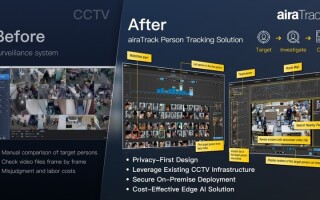Why Medical Grade Panel PC for Smart Hospitals?
February 24, 2020
Story

EMRs could be far more effective if they were more detailed, more dynamic, and could be updated in real-time.
A shortage of clinicians, poor patient flow, and a general lack of communication limit the efficiency of today’s hospitals. On the one hand, the lack of smooth patient flow is leading to overcrowded hospitals, delays in care delivery, and longer wait times.
On the other hand, the lack of planning and coordination among specialists, medical assistants, and nurse practitioners is causing an increase in the length of the average hospital stay. That’s not only costly, it also results in fewer spots for inbound patients.
Then there is poor communication between patients and healthcare providers. A closer look reveals that inefficient communication among healthcare teams is a crucial factor behind poor patient flow and high readmission rates. The Ponemon Institute surveyed more than 400 healthcare providers and found that poor communication is costing the healthcare industry more than $11 billion annually.
Enter electronic medical records (EMRs), sometimes called electronic health records (EHRs). They embody a high-level mechanism for communicating general patient information among healthcare providers like general practitioners, specialists, and pharmacies (Figure 1).

Figure 1. EMRs provide medical staff with general patient information, but could integrate more dynamic, real-time data to transform the healthcare experience.
While this is a good start towards increasing efficiency, EMRs could be far more effective if they were more detailed, more dynamic, and could be updated in real-time.
Enhancing EMRs for the Smart Hospital
Today, EMRs provide a historical profile of patients. But with increased transparency, portability, and accessibility, doctors and nurses can use EMRs as real-time snapshots of a patient’s status. This requires that EMRs integrate with the Internet of Medical Things (IoMT).
With the right IoT of security and communications infrastructure, patient location, vitals, and even MRIs or ultrasound images can be streamed wirelessly to mobile panel PCs or monitors used by nurses and doctors. In this connected hospital scenario, healthcare staff can use dynamic EMRs to access the information they need when they need it as patients move from intake to hospital rooms to operating rooms to recovery centers and eventually discharge. This can dramatically improve hospital efficiency.
Clinical-grade by design
Given the performance and connectivity available on a single, mobile touchpanel PC platform, the medical grade PC devices integrate robust signal isolation mechanisms to block noise, reduce interference, and improve the quality of the signal transmission in hospital environments. This is especially critical as smart hospitals experience an increasing amount of electrical, electronic, and RF emissions.
Just as important for medical device providers and systems integrators, the medical-grade touch panel PCs are packaged in an IP-65-rated, microbial-resistant housing, complete with sealed front bezels and a fanless architecture. These features minimize the likelihood of secondary infections that may stem from the platforms, yielding a greater 99 percent reduction in the amount of germs on the devices.
The systems are also required to meet numerous industry standards and certifications to ease their deployment in stringent hospital environments, including:
- IEC-60601-1 certification, which ensures the safety and essential performance of medical electrical equipment.
- IEC-62133 certification guarantees the safe operation of portable, Li-ion battery-based devices.
- ISO 14971 certification, which covers risk management in medical devices including an inherently safe device design, protective measures during manufacturing, and information safety.
- FCC, CE, and VCCI certifications that ensure proper wireless operation within acceptable RF emissions limits.
- Energy Star compliance, ensuring efficient power consumption.
These features help hospital operators, who manage facilities and equipment that must be operational 24/7, never experience downtime.
Medical-grade panel PCs meet industry requirements, deliver aiot performance
Wincomm is a leading manufacturer of medical touch panel PCs, embedded box PCs, and software products that empower IoMT facilities. And given recent advances processors and development tools, select Wincomm medical grade touch panel PC device platforms now support AI capabilities as well.
On the performance front, each system leverages a 6th or 7th generation Intel Core i5 or i7 processor, with overall system power consumption as low as 45.5 W. In conjunction with support for the aforementioned Intel OpenVINO toolkit, 32 GB of memory on all devices and either a 500 GB HDD, 64 GB SSD, or 128 GB SSD make provide more than enough compute horsepower and fast memory/storage for IoMT device data logging or precision medical AI imaging applications.
3D medical imaging-capable MXM graphics cards also takes medical imaging to the next level, and also allow for the integration of peripherals like webcams for live streaming of lab tests or surgical operations.
In terms of I/O, all C, F, and G series medical touchpanel PCs come standard with DisplayPort, LAN, and USB 3.0 or 3.1 interfaces, with M.2 slots available on select models. These M.2 ports allow for the integration of various wireless modules that support WLAN, 802.11a/b/g/n, Bluetooth, or RFID connectivity that make WMP medical grade series platforms easy drop-in additions to any IoMT deployment.
This breadth of wired and wireless connectivity also allows dynamic, real-time EMRs to be received and rendered directly onto the displays.




